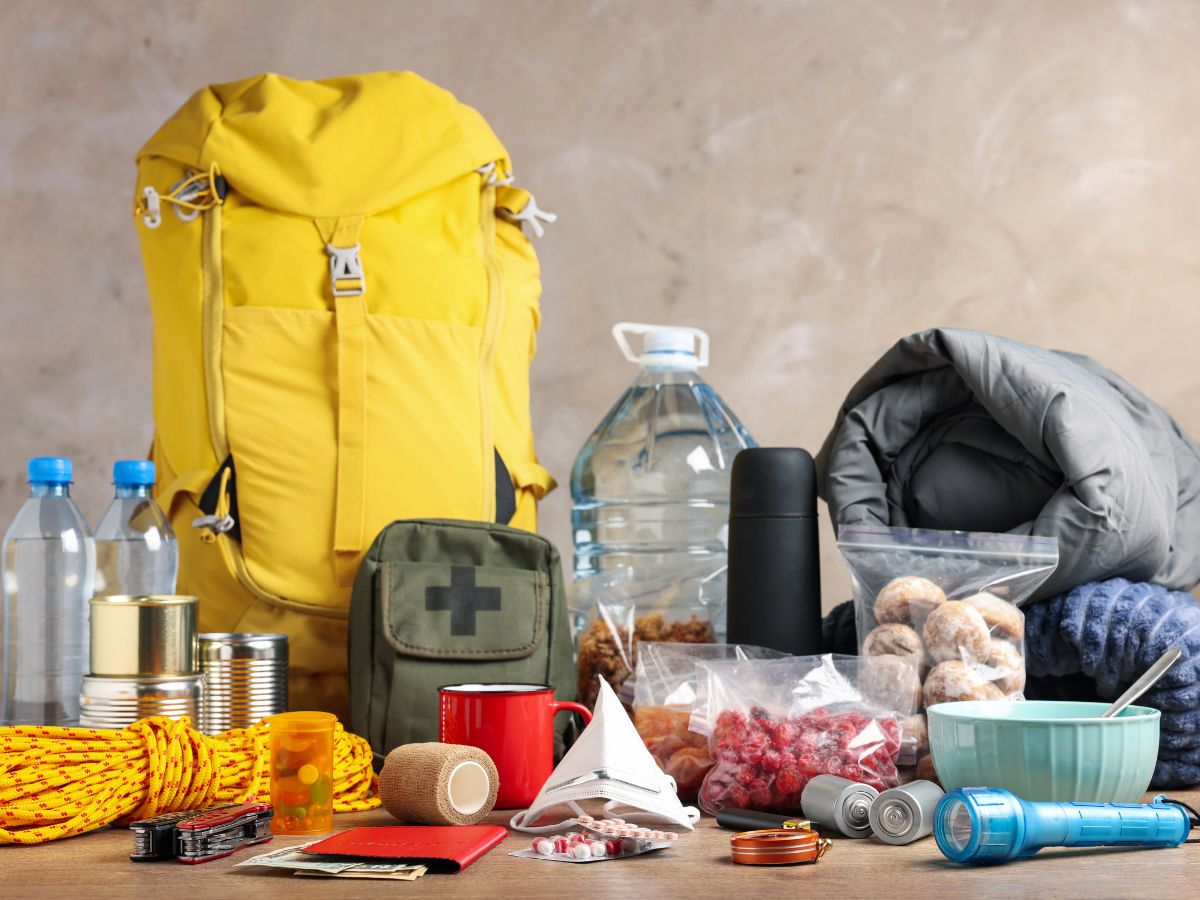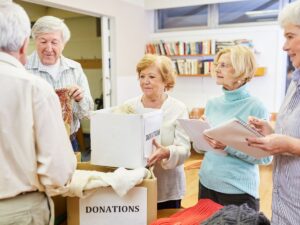Natural disasters and emergencies can strike unexpectedly, posing significant risks to everyone in the community—especially older adults. Seniors may face additional challenges during crises due to limited mobility, chronic health conditions, or difficulties in quickly evacuating. That’s why disaster preparedness is crucial for aging adults who wish to protect themselves and maintain independence in the face of emergencies. In this article, we’ll explore essential safety tips for seniors, from creating a personalized emergency plan to leveraging community resources, including potential city-specific services that can make all the difference when a disaster strikes.
1. Understand Your Specific Risks
Disaster risks can vary dramatically depending on your geographic location. Whether you live in an area prone to earthquakes, hurricanes, wildfires, or floods, it’s important to identify the hazards most likely to affect you. Here’s how:
- Research Your Region: Consult local emergency management websites or agencies for information on the types of disasters that have historically occurred in your area.
- Stay Informed: Sign up for alerts through government platforms, community apps, or local media outlets. These can provide timely notifications about approaching storms, fires, or evacuations.
- Check Building Safety: If you live in a high-risk zone—near the coast for hurricanes, close to a fault line for earthquakes, or in a floodplain—ensure your home is structurally sound and adheres to local building codes.
By understanding the most likely disasters in your locale, you can tailor your emergency plans and supplies to address specific challenges, such as power outages, road closures, or water contamination.
2. Create a Personalized Emergency Plan
A well-thought-out plan is the cornerstone of disaster preparedness. For seniors, certain elements may differ from those of younger adults due to medical or mobility considerations. Key components of a personalized plan include:
- Evacuation Strategy: Map out various evacuation routes—consider roads, public transportation, or assistance from family and neighbors if driving isn’t feasible. If you rely on a wheelchair or walker, plan how to transport them swiftly.
- Medication Management: Keep an updated list of all prescriptions, dosages, and pharmacy contacts. Ensure you have at least a week’s supply of medications on hand.
- Emergency Contacts: Compile phone numbers and addresses for relatives, friends, healthcare providers, and local emergency services in an easily accessible format.
- Alternate Shelter Options: Identify local shelters, hotels, or the homes of friends and family where you can stay if your residence becomes uninhabitable.
- Pet Plan: If you have pets, find out which shelters or hotels accommodate them in emergencies. Keep extra pet food and supplies ready.
Share your emergency plan with family members or neighbors so everyone understands the next steps if disaster strikes. For individuals with mobility or health conditions that require daily support, consider contacting local programs for seniors, such as In-Home Supportive Services (IHSS) if you live in California, to discuss how these services might adapt during an emergency.
3. Stay Connected with Community Resources
During a disaster, communication channels can break down, and access to medical supplies or transportation may be disrupted. Seniors should familiarize themselves with:
- Local Emergency Hotlines: Keep a note of numbers for fire, police, and ambulance services, as well as local FEMA or Red Cross hotlines.
- Senior Community Centers: Many centers serve as information hubs or temporary evacuation points. They can also guide you to resources like free medical supplies or mobility aids.
- City-Specific Assistance: If you’re a resident of Glendale, for instance, you might explore home care in Glendale or local government initiatives that offer free equipment or help with disaster prep.
Staying informed about community resources means you can act quickly and know exactly where to go if you need assistance evacuating, medical help, or a temporary shelter.
4. Assemble an Emergency Kit
No disaster plan is complete without a well-stocked emergency kit. Seniors may require specialized items, such as hearing aid batteries, extra eyeglasses, or medical equipment. For a more detailed guide on building your kit, check out our companion article, “What Seniors Need in an Emergency Kit: A Comprehensive Checklist.” However, at a minimum, make sure your kit includes:
- First Aid Supplies: Bandages, antiseptics, pain relievers, and any specialized medical items you use daily.
- Medications and Prescriptions: A multi-day supply in original bottles, plus a list of dosages.
- Water and Non-Perishable Food: Enough for at least three days, accounting for special dietary needs.
- Flashlight and Batteries: Include a portable radio and a phone charger (preferably battery- or solar-powered).
- Important Documents: Copies of IDs, insurance policies, and medical records stored in a waterproof container.
Review and refresh your kit twice a year, ensuring nothing has expired or become outdated.
5. Plan for Medical Needs and Mobility Challenges
Seniors often have unique health concerns. If you use oxygen, dialysis, or have other ongoing treatments, prioritize the following:
- Backup Power: If you rely on electrical medical devices (like a CPAP machine), consider a generator or an uninterruptible power supply.
- Coordination with Healthcare Providers: Talk to your doctor or home health agency about a contingency plan. This may include transferring medical records to a secondary facility if local clinics close.
- Accessible Evacuation: If you use a wheelchair or walker, ensure ramps and exits are clear. Practice using accessible vehicles or contact local transportation services that specialize in senior mobility.
Remember that some city programs—like free medical supplies for seniors if you live in areas like Granada Hills—can be invaluable for stocking up on necessary medical equipment before a disaster hits.
6. Build a Support Network
Isolation can amplify the dangers of a disaster. A reliable support network ensures you won’t be alone in an emergency. Strategies to develop this include:
- Neighbor Buddy System: Exchange contact information with a trusted neighbor willing to check in on you (and vice versa) if evacuation is required.
- Family Evacuation Plans: Discuss mutual meeting points with relatives in case phone lines are down. Use designated out-of-state contacts to relay messages.
- Senior-Friendly Social Apps: Platforms like Nextdoor or local Facebook groups can help connect you with nearby resources and community updates.
A support network doesn’t just offer physical assistance—it also helps maintain mental well-being during the stress and uncertainty of a disaster.
7. Practice Evacuation Drills and Mock Scenarios
It’s one thing to plan; it’s another to practice. Conducting drills can help you identify weaknesses in your emergency strategy, such as:
- Evacuation Timing: If you need extra time to move around, practicing can reveal whether you need to begin your evacuation earlier than official advisories recommend.
- Equipment Readiness: Are your mobility aids in good condition? Is your go-bag easily reachable?
- Communication Gaps: Did you successfully contact your support network? Did your phone battery hold out long enough?
Even if you only go through a mental exercise and test a partial evacuation, these rehearsals reduce panic during an actual crisis.
8. Keep Important Documents Safe
Losing critical paperwork can complicate recovery after a disaster. Seniors should safeguard:
- Identification Cards: Driver’s license, passport, Medicare or Medicaid ID.
- Insurance Policies: Health, home, and life insurance documents to streamline claims post-disaster.
- Banking Details: Contact information for financial institutions and any relevant account numbers.
- Medical Records and Advanced Directives: Keep a copy of prescriptions, doctors’ notes, and power of attorney documents.
Store physical copies in waterproof, fire-resistant containers. Additionally, scan or photograph these documents and save digital copies on a password-protected device or cloud service.
9. Mental Health and Stress Management
Disasters aren’t just physically dangerous—they can also take a severe toll on mental health. It’s common to feel anxious or depressed, particularly if you’ve lost property or have been displaced. Coping strategies include:
- Professional Support: Many communities offer crisis counseling or helplines post-disaster. Contact your local senior center or mental health clinic to see what’s available.
- Stay Connected: Keeping in touch with friends, family, or fellow evacuees can provide emotional relief.
- Limit Media Consumption: Constantly watching disaster coverage can amplify stress. Stay informed, but balance it with activities that help you relax.
- Resume Routine: Even small normal activities—like a daily walk or reading a favorite book—can restore a sense of control.
If you notice ongoing symptoms of severe anxiety, insomnia, or depression, don’t hesitate to reach out to healthcare providers or a counselor for specialized help.
10. Review and Update Your Plan Regularly
Senior needs can evolve over time, and new health conditions, address changes, or updated local emergency protocols may affect your existing plan. Revisit your strategy at least once a year:
- Medical Changes: Adjust medication lists and doctor contact information if you switch providers or develop new conditions.
- Location Changes: If you move to a new home or city, research local hazards, emergency routes, and available resources.
- Equipment Maintenance: Check batteries in hearing aids, wheelchairs, or other devices. Test generators if you have one.
- Community Resource Updates: City services may add or remove programs; keep an eye on local announcements or websites, such as updates to free medical supplies for seniors or changes in IHSS availability.
Regularly refining your plan ensures you’ll be prepared for whatever nature throws your way.
Conclusion
Disaster preparedness is crucial for everyone, but seniors in particular benefit from thorough, proactive planning. By understanding regional risks, creating a customized emergency plan, assembling essential supplies, and tapping into community resources, older adults can significantly reduce their vulnerability. Regular reviews and drills help keep your plan relevant and practical as your needs evolve.
Remember: a resilient mindset and a strong support network can be the most valuable tools in any crisis. With the right precautions, seniors can confidently face potential disasters, secure in the knowledge that they’ve done everything possible to protect themselves and preserve their independence.









